.282ZUnderstanding Britain’s warsBy Michael Burke
Britain is a very frequent participant in US-led wars. This stands in contrast to many other European states ranging from countries such as Sweden, to Spain, to Italy and Germany. The piece below examines the material reasons for this difference, and explains British politicians’ determination to join in US military adventures.
The widely held view that Britain’s contribution to an air war over Syria will make no significant change to its outcome also made little impact on the parliamentary vote for war. Military insignificance is even accepted by many advocates of action. Former Tory Defence Secretary Michael Portillo argues this boldly telling ‘This Week’ that Cameron had made no case for war, the arguments were flimsy and that there seemed to be no strategic plan. Nevertheless Portillo was in favour of war, saying that otherwise “the US will begin to regard Britain as an unreliable ally”. It appears that many MPs on both sides of House of Commons share this approach.
The question of Britain’s relations with the US has long been uppermost in the considerations of strategic policy making in Britain. The term ‘special relationship’ was itself coined by Winston Churchill after Britain’s failure to develop independent nuclear weapons technology. As such it is a sign of both Britain’s relative weakness and its resolve to participate in the US’s efforts to act as the sole global superpower.
This determination to act alongside the US is not simply reactionary nostalgia or imperial delusion, although these factors naturally play a role. There is a strong material reason for many British politicians’ eagerness for war, irrespective of the outcome. At the same time, there is a strong reason for all progressives, all socialists and all those who simply want to sustainably raise living standards to oppose those wars.
++++++++++++++++++++++++++++++++++++++
In a previous piece in SEB the present author outlined the most important economic factors in the global current system of imperialism. The term imperialism as generally used is not a precise economic categorisation. As such, it can and does fall into misuse. Therefore, drawing on the conclusions of the earlier piece, the term imperialism here is strictly meant as:
- The global system of economic domination that has a specific headquarters, namely the US as sole global imperialist superpower
- That system requires continuous and expanding military and other interventions in order to maintain its rule
- This is because the imperialist powers together and the dominant imperialist power of the US are in relative decline economically (having reached their relative peak economic power in 1951)
- They no longer exploit the world primarily through a system of capital export and interest payment inflows (as was the case in Lenin’s time)
- Instead, of the US, Britain, France, Japan and Germany only the latter two countries have net assets at all. The first three countries are in fact net debtor nations. As a group these five have a broad balance on international assets, neither net creditors nor net debtors as the net debts of the US, British and French combined broadly equal the net assets of Japan and Germany
- Yet at the same time all of these have continued to receive vast inflows of capital in the form of net interest payments
- It is only possible to receive net interest when there or no net assets when there is a Mafia-style operation on a global scale, exacting interest and compliance at the barrel of a gun or the end of a Tomahawk missile
- The economically weakened imperialist powers, led by the US with Britain and France playing the role of aides-de-camp, are obliged to become more vicious and militaristic. They require continuous military operation in order to enforce those inflows (as well as favourable trade agreements, strategic military outposts, below market price contracts for raw materials and so on). Naturally, Japan and Germany benefit from this overall system but are not motivated to lead it since ordinary contract law enforcement will secure their positions.
The case of Britain
Within this overall framework the British case is a specific one. It is the first of the imperial powers to register a persistent trade deficit and then the first to switch from being a net creditor nation to being a net debtor. These are both milestones in and contributors to Britain’s historic decline as an economic power.
Britain has experienced the most spectacular decline within the imperialist bloc. Contrary to widespread assertion the British economy is now the tenth largest in the world (World Bank pdf). Britain’s weight in the world economy has undergone a spectacular relative decline over the long-term, as shown in Fig.1.
Fig.1 Britain’s Share of World GDP
Source: Maddison, World Bank for 2014 data, author’s calculations
Maddison records Britain’s share of World GDP as 9.5% in 1870 and 9.4% in 1900. It is likely that there was a higher peak at some point between those two dates. As Fig.1 shows the weight of Britain’s economy in the world had halved by the mid-1960s, perhaps over a period of 90 years or so. According to separate World Bank data it has halved again in about 45 years since. So, in 2014 Britain accounted for just 2.3% of World GDP. While the weight of the imperialist countries in the world economy has declined since the 1950s, Britain’s decline has been taking place far longer and is the most pronounced of all.
A key factor in that decline and a product of it is the structure of the British economy, with a very large financial sector and an industrial sector which has declined in relative terms for over a hundred years. (The industrial decline is now also absolute. Industrial production was lower in October 2015 than in the same month in 1988).
Formerly, the finance sector sucked up uninvested savings generated in the British economy and invested them overseas. This is the export of capital identified by Lenin. This was subsequently replaced with sucking in savings from the rest of the world and investing them globally, making a financial return on the difference.
Fig.2 below shows the UK current account balance over time. The current account is comprised of net trade flows (exports minus imports of both goods and services) as well as the net flows of interest and dividend payments between Britain and the rest of the world.
Fig.2 UK Current Account Deficit Over the Long Run
Source: Bank of England, ‘Three Centuries of Data’
According to Bank of England data the British economy first registered a deficit on trade in 1876. But persistent trade deficits did not appear until the period immediately prior to the First World War. However persistent deficits on the current account did not appear until the period immediately prior to the Second World War, 25 years later. This is because in the interim Britain continued to receive a very large net inflow on interest payments.
This component of the current account, the Net Investment Income balance is crucial for understanding the latest phase in the trends in the British economy. It also directly impacts on British policy making, which will be discussed below.
But the first effect of persistent deficits on the current account with the rest of the world is that they must be covered by incurring debts or the sale of assets. This rundown of overseas savings has taken place over a prolonged period since the approach of the Second World War. The initial effect was a rundown in the net balance of overseas assets versus overseas liabilities, which is recorded as the Net International Investment Position. This was then followed by a further rundown of overseas assets and a decisive switch from being a net creditor nation to a net debtor, as shown in Fig.3.
Fig.3 UK’s Net International Investment Position

The UK economy only definitively became a net debtor economy in 1995, 60 years after it first began to accumulate current account deficits. Prior to that point and boosted by the revenues from North Sea oil in the 1980s it registered its largest modern level of net assets in 1986. But that windfall was frittered away with the
disastrous consumption binge of the ‘Lawson Boom’.
It is important to note that there was a further one-off spike higher in net assets in 2008. This was directly linked to the banking and financial crisis. UK banks had expanded enormously overseas through leverage, or borrowing. They repatriated many of those assets at a loss in 2008 in order to avoid bankruptcy and have continued to wind down overseas assets since. At the same time the overseas loans to British banks were withdrawn. Apart from that spike, the precipitate decline in the Net international Investment Position resumed. This a key feature of how the Global Financial Crisis specifically impacted Britain.
The direct consequence of this has been a collapse in Net Investment Income, as shown in Fig.4 below. The UK is not the same as the US. Unlike the US Dollar, the rest of the world is not obliged to hold the British currency in order to meet international trade payments and to service interest on international debt obligations. Within the Empire and then its vestige of the Sterling Area, other countries were obliged to hold British currency. The ‘Sterling Area’ collapsed in mid-1972. As a result, and combined with the UK’s chronic lack of competitiveness, the interest income account switched to a deficit in the 1970s.
This deficit was ‘rectified’ in the 1990s and the early part of this century by the growing role of the British banks in international finance, out of all proportion to the size of the UK economy. This was funded not by domestic savings but by international borrowing. Essentially, the operation was nothing more sophisticated than borrowing from other international banks and speculating on higher-yielding riskier assets overseas as well as on the domestic housing market. The benefit of this inflow accrued mostly to the banks and bankers themselves, and the Blair/Brown government came to rely on the tax revenue from them.
Fig.4 UK Investment Income Collapse
The gains from that operation were always a mirage, a stark confirmation of what
Marx called ‘fictitious capital’. As recently as 2011 the UK recorded a surplus of over £20bn on the investment income account and by 2014 this was a deficit of £32bn. This deterioration in overseas income of more £52bn represents 2.9% of 2014 GDP. It is an extraordinary slump, and transforms Britain’s ability to extract capital from the rest of the world.
The UK no longer has net overseas assets but substantial liabilities. It also has a persistent current account deficit. It is therefore difficult to foresee how this sharp deterioration in the net external position of the economy can be easily reversed.
Without a thorough reorientation of British economic policy and the current structure of the British economy there are in effect twin prongs to a recovery programme for Britain’s external financial crisis. The first will be to increase the rate of exploitation at home with lower pay and pensions, worse working conditions and public services. The second will be to increase the rate of exploitation overseas; to participate in the carve-up of nations, to access their basic goods at below-market prices and enforce onerous debts. This is what is meant by British politicians’ determination to ‘be at the table’ when the US judges that the maximum advantage has been extracted from wars or military interventions.
An alternative would be to use the remaining strength of the British banking sector, which has been bailed out by public funds, to redirect its lending from speculative activity towards investment in public goods and productive investment. But that would require a thorough-going change of economic policy and structures.
Three trends in the labour movement
Historically there have always been two main trends in the labour movement (as well as a multitude of intermediary ones). There has been an overtly pro-imperialist current almost always willing to support Britain’s wars and only departing from that attachment if the US was opposed (as with Gaitskell and the Anglo-French invasion of Egypt to seize control of the Suez Canal). This pro-imperialist current has always dominated the leadership of the Labour Party and many of the unions.
The election of Jeremy Corbyn has changed that. There has always been a minority current inside the Labour Party (though often barely represented in its leadership) who opposed British military adventures, even when they were done in support of the US. The opposition to the actions of British imperialism now comes from the leader of a major political party, one which could form the next government. As such it is an anathema to the interests of British imperialism as a whole. This explains the ferocious and relentless media onslaught on the Corbyn leadership of the Labour Party.
Between these two poles lies another broad grouping. This was highlighted in the two recent votes on cuts to working tax credits and the vote on bombing Syria. On the former there was virtual unanimity to oppose the government and vote against the cuts. On the matter of war, 66 Labour MPs voted with the Tory government and a number of others abstained.
Irrespective of the confused or contradictory ideas of individual MPs or groups of MPs, these votes reveal three fundamental political trends that have persisted for over a century in the British labour movement. The first is an overtly pro-imperialist bloc, many of whom may now go along with the anti-austerity agenda on a purely tactical basis, such as the Blairites. The second is a bloc led by Jeremy Corbyn which is both anti-austerity and anti-imperialist. There is also a third bloc, which is anti-austerity, but pro-imperialist.
The outlook and ideas of this third bloc, like all ideas, spring from material conditions. Marxists understand that those material conditions amount to a separate layer in the labour movement known as the ‘labour aristocracy’. The ideas are what Lenin called ‘Economism’ but which has become known as ‘workerism’. That is a concentration on the immediate economic struggles of the workers and the poor and the relegation of ‘political’ matters, not least war and peace to an issue of second-rate or third-rate importance. In the specific circumstances of British Labour Party politics currently this might be expressed as the view that, while we oppose war it is much more important to unite around the issue of fighting the Tories on cuts.
Unfortunately the real world does not allow matters of war and peace to be relegated as if they are minor matters. The one issue that the population as a whole will always place ahead of its own living standards is its own security.
The open representatives of imperialism understand this. In his July 2015 Budget speech, where the Tories announced austerity mark II, Osborne mentioned ‘security’ 30 times, more than the mentions of ‘growth’, ‘prosperity’ or ‘deficit’ combined. The intention is clear; to trump discontent over renewed austerity with a claim to offer a belligerent and reactionary ‘security’ agenda. This is also the thread running increasingly through the government’s reactionary ‘security’ agenda on energy, civil liberties, immigration, schools and aid policies.
Therefore politically it is not possible to disregard the war offensive, to by-pass it and win on the terrain of anti-austerity. Politics comes before economics.
It should also be clear from the economic analysis above that the two-pronged strategy of increasing exploitation at home and increasing exploitation abroad through war needs a two-pronged response. The worker who has her wages cut, or sees bills rise with another privatisation or has her tax credits cut has no interest in Britain pursuing another Middle East war, or in it increasing its military spending, or in renewing Trident. She has no interest in ‘getting a seat at the table’ or Britain’s dubious military ‘successes’. The interests represented at that table will be Britain’s hobbled banks and finance sector.
Instead, Jeremy Corbyn and his closest allies are right to oppose both austerity and war and to remain committed to fighting both.



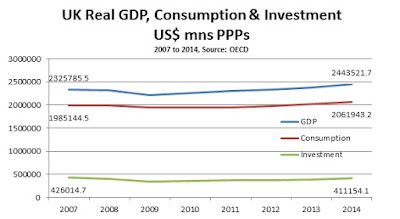

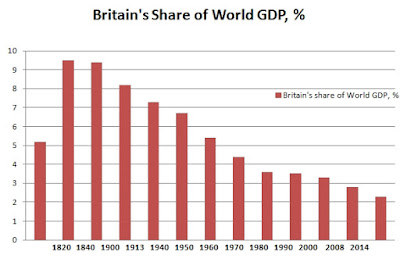
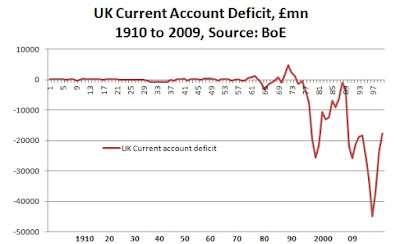



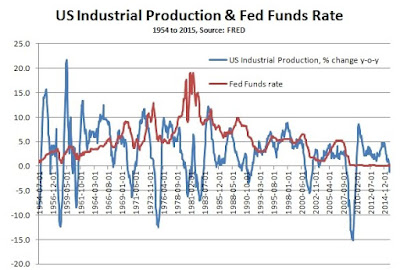
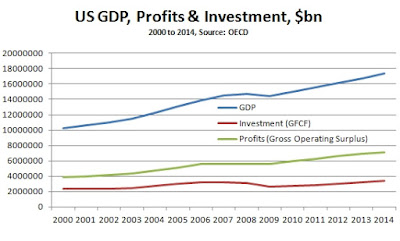



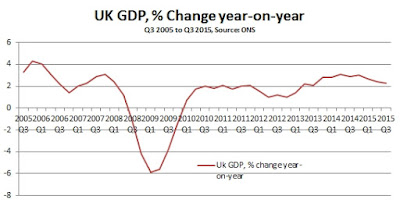

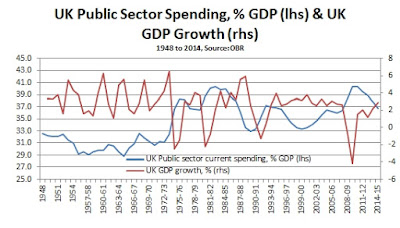
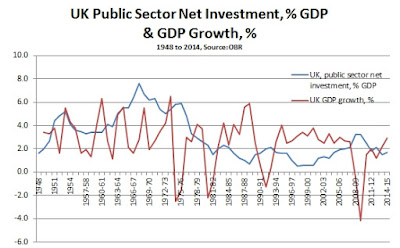
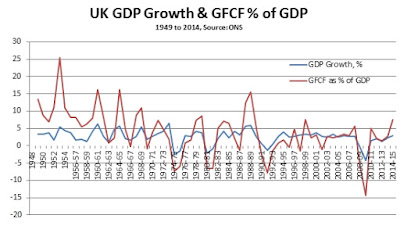

Recent Comments